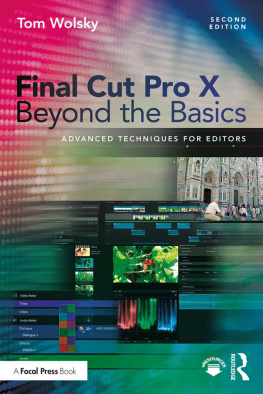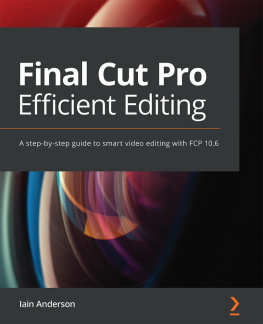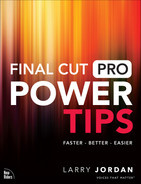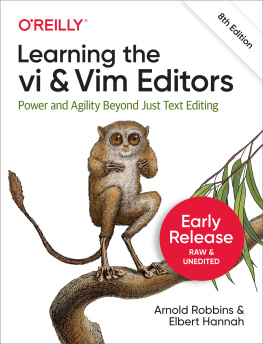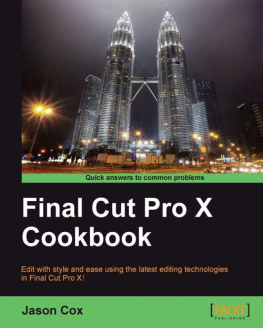Final Cut Pro X Beyond the Basics
Going beyond where introductory books leave off and written for experienced editorsespecially those new to Final Cut Pro Xthis new and revised edition of Final Cut Pro X Beyond the Basics is brimming with cutting-edge methods to bring your editing skills to the next level. Explained in jargon-free language by a seasoned teacher and digital editor, Tom Wolskys text has been fully updated to address the new Final Cut Pro X interface and changes to the soft ware. This full-color workshop features tutorials that provide firsthand experience on the art and technique of editing at an advanced level with Final Cut Pro X, as well as in-depth information and time-saving tips that will allow readers to master the applications interface elements, tools, and nuances. Wolsky covers all the bases, including:
- Library workflows and collaboration;
- Media organization and metadata customization for different genres;
- Editing techniques for projects of various lengths and types;
- Using markers and the timeline index;
- Audio tools;
- Multicam editing;
- Audio and video effects;
- Color correction, including secondary corrections and isolated color adjustments;
- Compositing and complex animation.
An accompanying eResource features downloadable Final Cut Pro X project libraries for the tutorials discussed in the book, offering readers hands-on examples of the techniques and practices covered.
Tom Wolsky is a founding director of the Digital Media Academy, where he taught Final Cut Pro for many years. Tom is the author of several Final Cut and video production instructional books as well as DVDs for FCP, Final Cut Studio, and Mac OS X for Class on Demand, where his training has won multiple Telly and Horizon Interactive awards. Before teaching, he worked in the film and television industry for more than 40 years.
Final Cut Pro X Beyond the Basics
Advanced Techniques for Editors
Second edition
Tom Wolsky
Second edition published 2018
by Routledge
711 Third Avenue, New York, NY 10017
and by Routledge
2 Park Square, Milton Park, Abingdon, Oxon OX14 4RN
Routledge is an imprint of the Taylor & Francis Group, an informa business
2018 Tom Wolsky
The right of Tom Wolsky to be identified as the author of this work has been asserted by him in accordance with sections 77 and 78 of the Copyright, Designs and Patents Act 1988.
All rights reserved. No part of this book may be reprinted or reproduced or utilised in any form or by any electronic, mechanical, or other means, now known or hereafter invented, including photocopying and recording, or in any information storage or retrieval system, without permission in writing from the publishers.
Trademark notice : Product or corporate names may be trademarks or registered trademarks, and are used only for identification and explanation without intent to infringe.
First edition published 2015 by Focal Press
Library of Congress Cataloging-in-Publication Data
Names: Wolsky, Tom, author.
Title: Final cut pro X beyond the basics : advanced techniques for editors / Tom Wolsky.
Description: Second edition. | New York : Routledge, Taylor & Francis Group, 2018. | Includes bibliographical references and index.
Identifiers: LCCN 2017008568 | ISBN 9781138735835 (hbk) | ISBN 9781138735842 (pbk) | ISBN 9781315186306 (ebk)
Subjects: LCSH: Final cut (Electronic resource) | Digital videoEditing.
Classification: LCC TK6680.5 .W64 2018 | DDC 777/.55028553dc23
LC record available at https://lccn.loc.gov/2017008568
ISBN: 978-1-138-73583-5 (hbk)
ISBN: 978-1-138-73584-2 (pbk)
ISBN: 978-1-315-18630-6 (ebk)
Typeset in Minion Pro
by Apex CoVantage, LLC
Visit the eResources: www.routledge.com/products/9781138735842
For B.T.
With endless love and gratitude
Contents
Guide
First, as always, my gratitude to all the people at Focal Press/Routledge who make this book-writing process relatively painless, particularly Simon Jacobs, editor, Film and Video for Focal Press/Routledge, for his thoughtful advice and guidance, and for bringing this project to life. My thanks also to Alaina Christensen, production editor, for taking time from her other projects to work on this, and John Makowski, for his assistance.
Thanks to Jamie Vidich and his team at Bookbright Media for helping me through the copy-editing process, and many thanks to Gareth Toye for his excellent work on another cover for one of my books. Many thanks for Kate Reeves for proof reading and Matthew White for indexing.
So many people helped make this book possible and deserve thanks: Steve Oakley, first, for his gracious permission to allow me to use material from his wonderful short, A Great Life; and second, to Steve and Lexi Quinn for letting me use a professionally shot piece of green screen work. Thanks again to Rich Lipner of Finca Dos Jefes and Caf de la Luna for his kind cooperation for allowing us to shoot his coffee tour, with special thanks to Lazario and Hermione for their assistance. I have to thank Travis Schlafmann, one of the outstanding instructors at Digital Media Academy, for letting me use the snowboarding and skiing video that accompanies the book. Though its been quite a few years since we first shot at CoHo, my grateful thanks to the musicians and organizers of the Stanford Summer Jazz Workshop for allowing us to tape their performance, especially Ambrose Akinmusire, trumpet; Patrick Wolff, tenor sax; Ryan Snow, trombone; Sam Grobe-Heintz, piano; Josh Thurston-Milgrom, bass; and Adam Coopersmith, drums. Thanks as always to our friends in Damine, Japan. A great many thanks are due to my partner, B. T. Corwin, for her insights, her endless encouragement, her engineering technical support, and her patience with me. Without her, none of this would have been possible. Any errors, mistakes, or omissions are solely mine, as Ive looked at these words and thought about them long enough. If errors are brought to my attention I shall post corrections on my website as well as changes that are made to the application as it moves forward.
The first movies were single, static shots of everyday events. The Lumire brothers screening in Paris of a train pulling into the La Ciotat train station caused a sensation. Shot in black and white, and silent, it nevertheless conveyed a gripping reality for the audience. People leaped from their seats to avoid the approaching steam locomotive. The brothers followed this with a staged comic scene. Georges Mlis expanded on this by staging complex tableaux that told a story. It wasnt until Edwin H. Porter and D. W. Griffith in the United States discovered the process of editing one shot next to another that movies were really born. Porter also invented the close-up, which was used to emphasize climactic moments. Wide shots were used to establish location and context. Griffith introduced such innovations as the flashback, the first real use of film to manipulate time. Parallel action was introduced, and other story devices were born, but the real discovery was that the shot was the fundamental building block of film and that the film is built one shot at a time, one after the other. It soon became apparent that the impact of storytelling lies in the order of the shots.

